Investigation on the Regeneration Performance of a New Mixed Liquid Desiccant Solution in Falling Film Regenerator †
Abstract
:1. Introduction
2. Comparison between Corrosion Behavior
3. Experimental Method
4. Results for Regeneration and Discussion
4.1. Influence of Air Flow Rate
4.2. Influence of Air Temperature
4.3. Influence of Air Humidity
4.4. Influence of Solution Flow Rate
4.5. Influence of Solution Temperature
5. Conclusions
Author Contributions
Acknowledgments
Conflicts of Interest
References
- Liu, J.; Zhang, T.; Liu, X.; Jiang, J. Experimental analysis of an internally-cooled/heated liquid desiccant dehumidifier/regenerator made of thermally conductive plastic. Energy Build. 2015, 99, 75–86. [Google Scholar] [CrossRef]
- Lee, J.H.; Jung, C.W.; Chang, Y.S.; Chung, J.T.; Kang, Y.T. Nu and Sh correlations for LiCl solution and moist air in plate type dehumidifier. Int. J. Heat Mass Transf. 2016, 100, 433–444. [Google Scholar] [CrossRef]
- Luo, C.; Su, Q.; Mi, W. Thermophysical properties and application of LiNO3–H2O working fluid. Int. J. Refrig. 2013, 36, 1689–1700. [Google Scholar] [CrossRef]
- Donate, M.; Rodriguez, L.; Lucas, A.D.; Rodríguez, J.F. Thermodynamic evaluation of new absorbent mixtures of lithium bromide and organic salts for absorption refrigeration machines. Int. J. Refrig. 2006, 29, 30–35. [Google Scholar] [CrossRef]


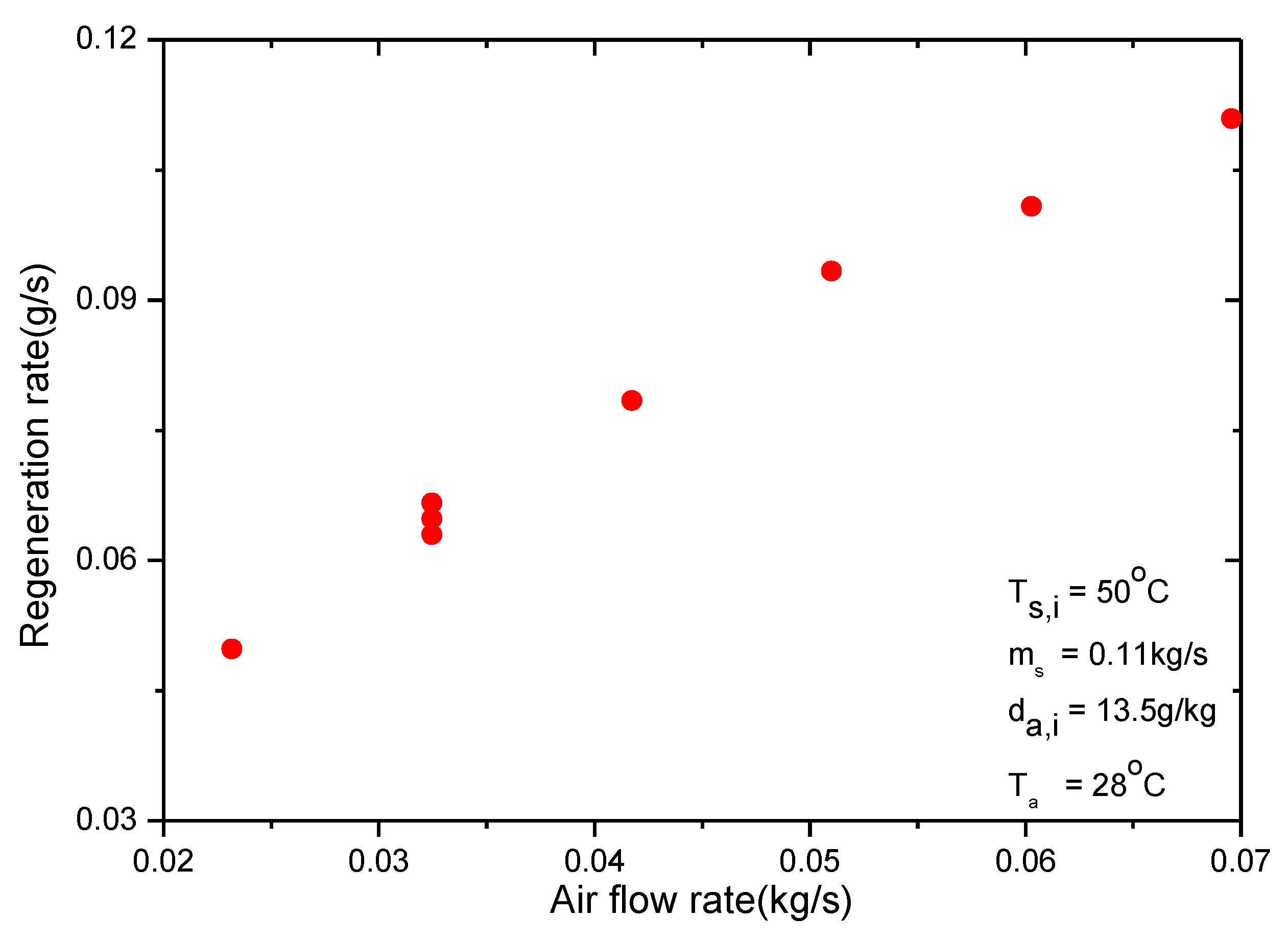
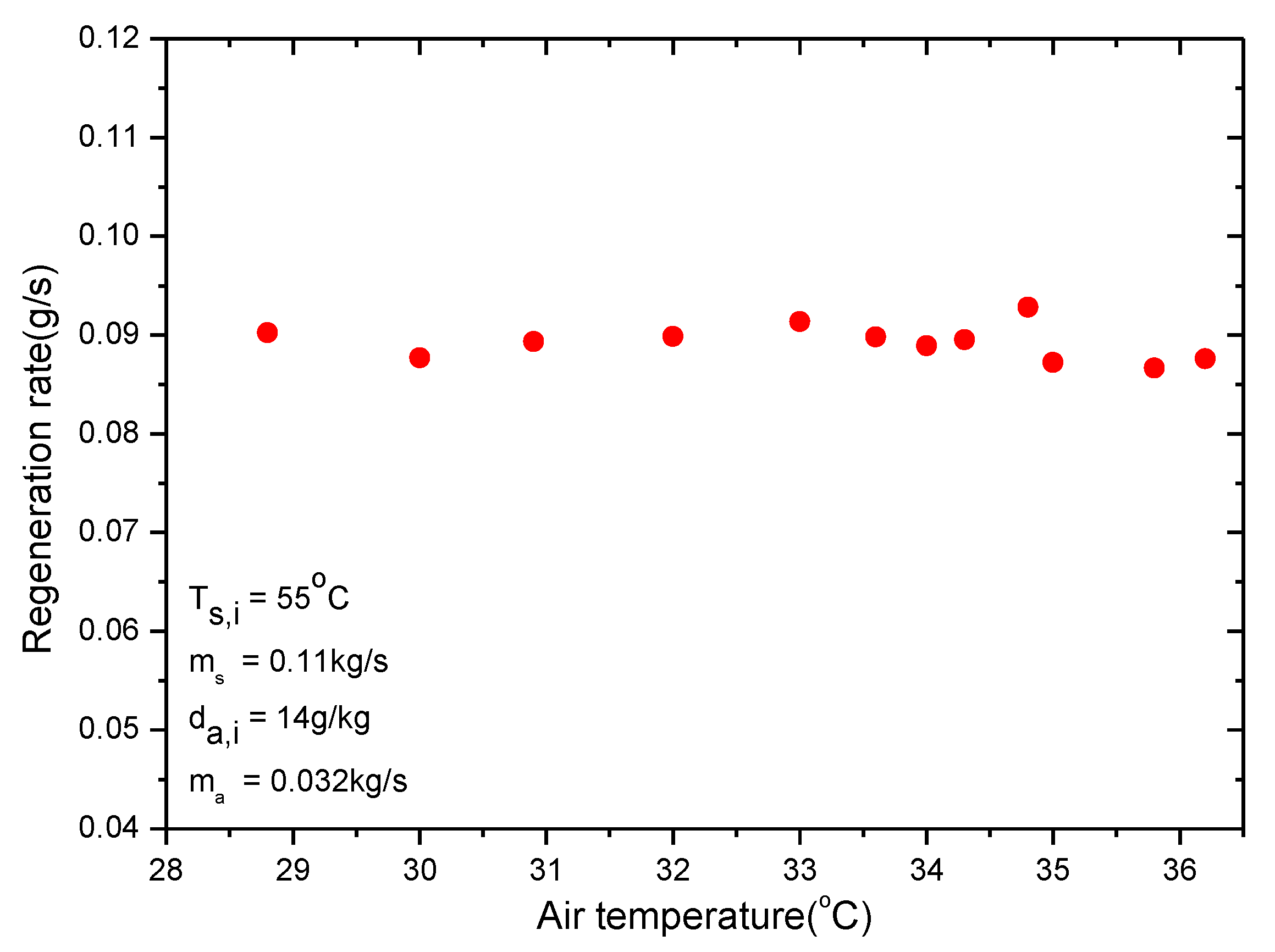
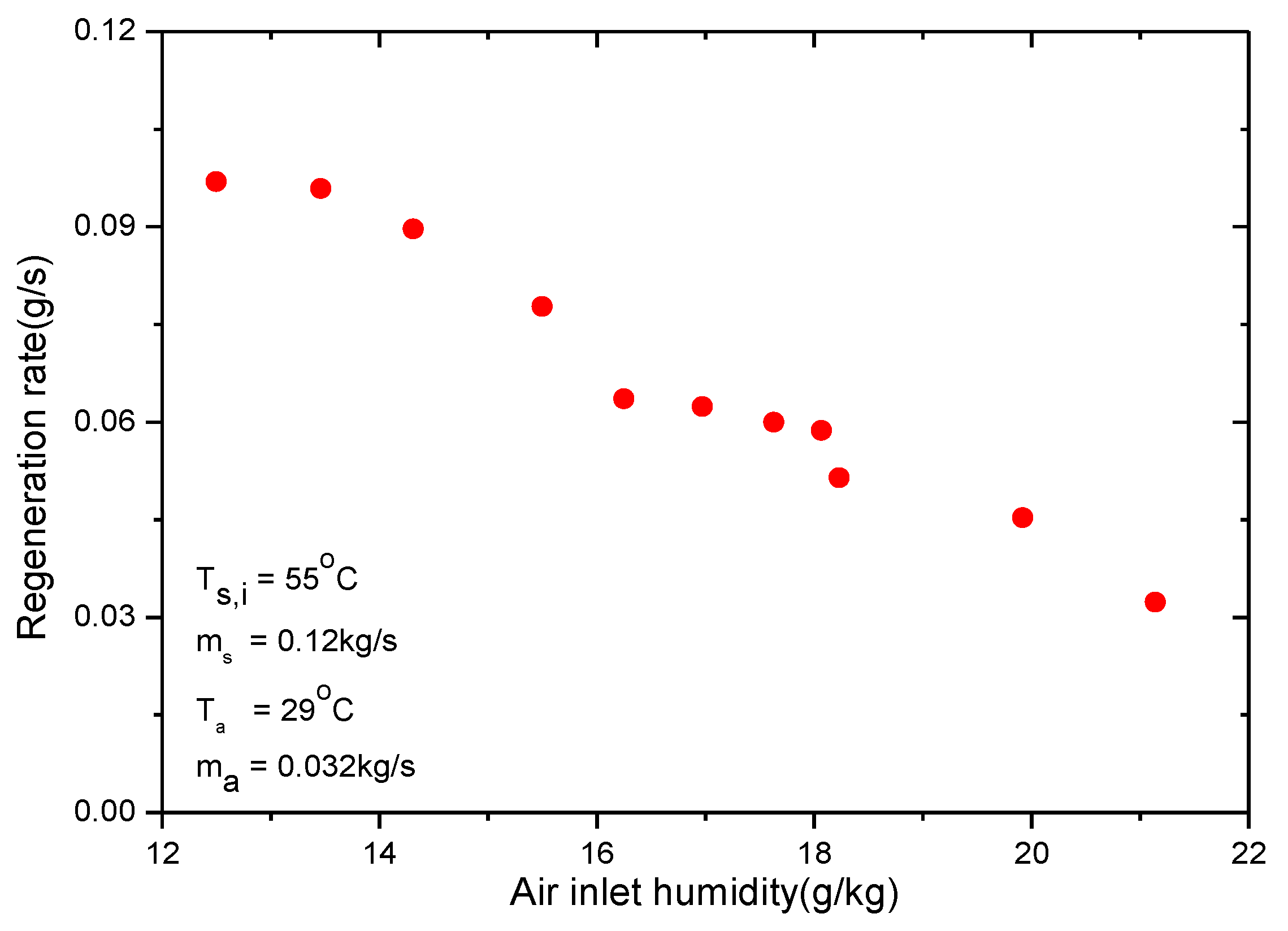
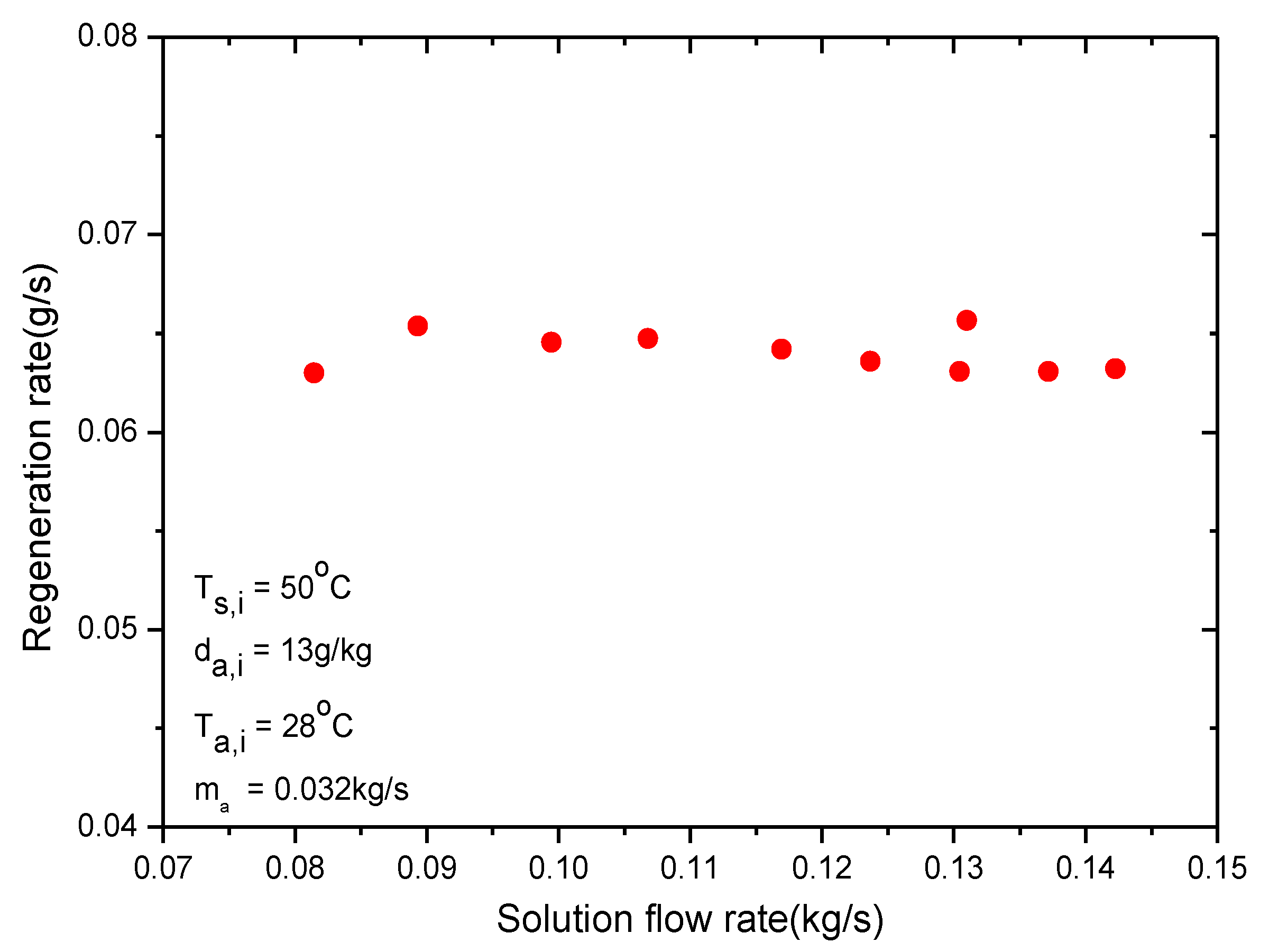
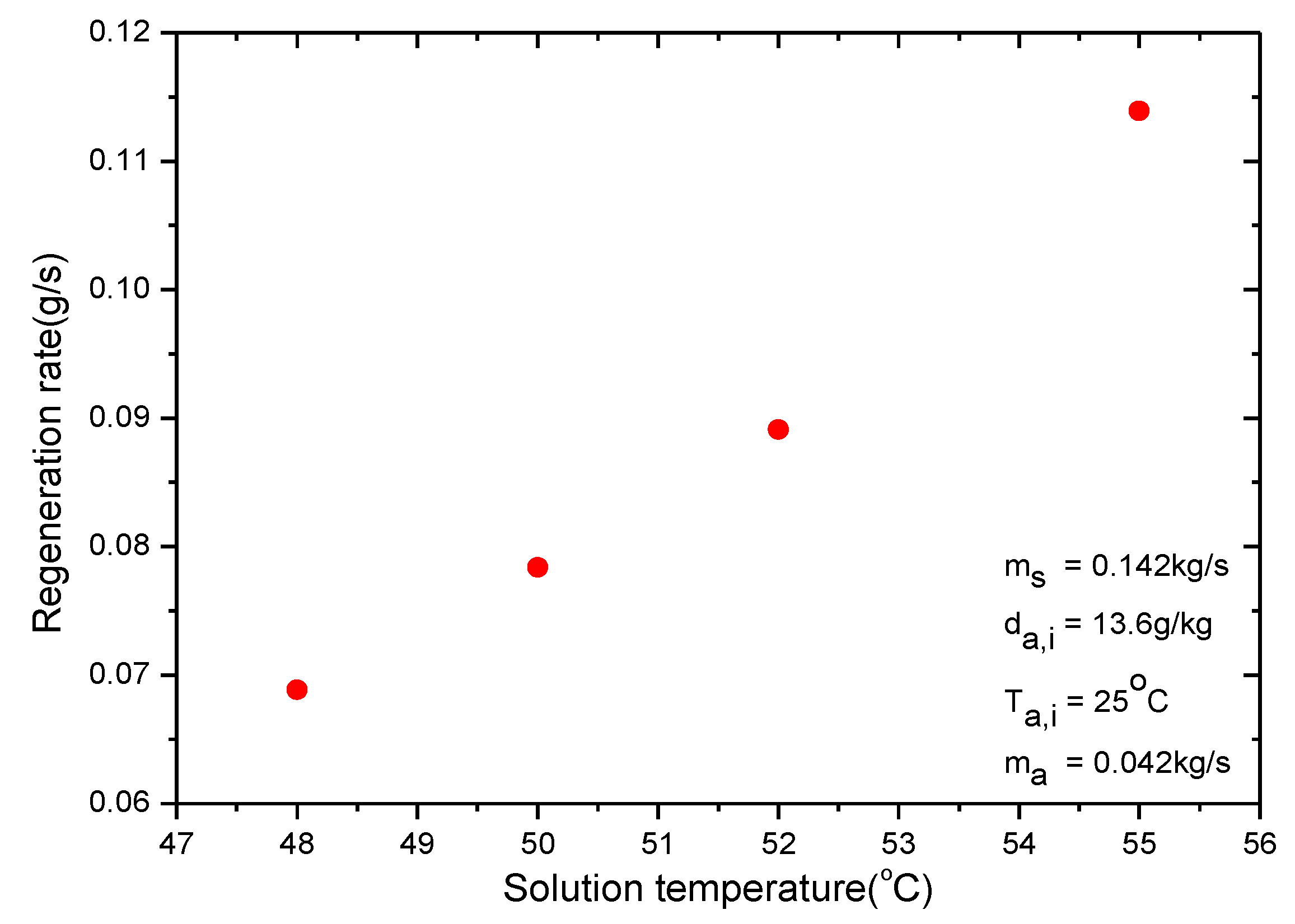
Publisher’s Note: MDPI stays neutral with regard to jurisdictional claims in published maps and institutional affiliations. |
© 2018 by the authors. Licensee MDPI, Basel, Switzerland. This article is an open access article distributed under the terms and conditions of the Creative Commons Attribution (CC BY) license (https://creativecommons.org/licenses/by/4.0/).
Share and Cite
Wen, T.; Zhong, D.; Wang, Y.; Luo, Y. Investigation on the Regeneration Performance of a New Mixed Liquid Desiccant Solution in Falling Film Regenerator. Proceedings 2018, 2, 1374. https://doi.org/10.3390/proceedings2221374
Wen T, Zhong D, Wang Y, Luo Y. Investigation on the Regeneration Performance of a New Mixed Liquid Desiccant Solution in Falling Film Regenerator. Proceedings. 2018; 2(22):1374. https://doi.org/10.3390/proceedings2221374
Chicago/Turabian StyleWen, Tao, Dan Zhong, Yuanhao Wang, and Yimo Luo. 2018. "Investigation on the Regeneration Performance of a New Mixed Liquid Desiccant Solution in Falling Film Regenerator" Proceedings 2, no. 22: 1374. https://doi.org/10.3390/proceedings2221374




